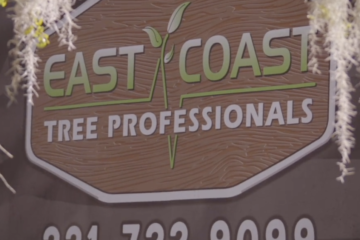https://www.kennedyspacecenter.com/explore-attractions/race-to-the-moon/moon-tree-garden
MOON TREE GARDEN The Apollo / Saturn V Center is open again and requires a transportation reservation to visit. Learn how to make a reservation and include the Apollo / Saturn V Center to your day. Take a moment to relax and reflect on the incredible achievements of humankind in the Moon Tree Garden. These second-generation trees are direct descendants of seeds that were taken to the Moon, and were supplied by Rosemary Roosa, Apollo 14 astronaut Stuart Roosa’s daughter and president and chief executive officer of the Moon Tree Foundation. The 12 trees represent the 12 crewed Apollo missions. The garden surrounds a one-of-a-kind bronze statue of Apollo 11 astronauts Neil Armstrong, Buzz Aldrin and Michael Collins. The statue was created by sculptors George Lundeen, Mark Lundeen and Joey Bainer, and is on loan to the visitor complex from Rocket Mortgage® by Quicken Loans.
https://en.wikipedia.org/wiki/Apollo_11
Apollo 11 (July 16–24, 1969) was the spaceflight that first landed humans on the Moon. Commander Neil Armstrong and lunar module pilot Buzz Aldrin formed the American crew that landed the Apollo Lunar Module Eagle on July 20, 1969, at 20:17 UTC. Armstrong became the first person to step onto the lunar surface six hours and 39 minutes later on July 21 at 02:56 UTC; Aldrin joined him 19 minutes later. They spent about two and a quarter hours together outside the spacecraft, and collected 47.5 pounds (21.5 kg) of lunar material to bring back to Earth. Command module pilot Michael Collins flew the Command Module Columbia alone in lunar orbit while they were on the Moon’s surface. Armstrong and Aldrin spent 21 hours, 36 minutes on the lunar surface, at a site they had named Tranquility Base upon landing, before lifting off to rejoin Columbia in lunar orbit.
Apollo 11 was launched by a Saturn V rocket from Kennedy Space Center on Merritt Island, Florida, on July 16 at 13:32 UTC, and it was the fifth crewed mission of NASA‘s Apollo program. The Apollo spacecraft had three parts: a command module (CM) with a cabin for the three astronauts, the only part that returned to Earth; a service module (SM), which supported the command module with propulsion, electrical power, oxygen, and water; and a lunar module (LM) that had two stages—a descent stage for landing on the Moon and an ascent stage to place the astronauts back into lunar orbit.
After being sent to the Moon by the Saturn V’s third stage, the astronauts separated the spacecraft from it and traveled for three days until they entered lunar orbit. Armstrong and Aldrin then moved into Eagle and landed in the Sea of Tranquility on July 20. The astronauts used Eagle‘s ascent stage to lift off from the lunar surface and rejoin Collins in the command module. They jettisoned Eagle before they performed the maneuvers that propelled Columbia out of the last of its 30 lunar orbits onto a trajectory back to Earth.[7] They returned to Earth and splashed down in the Pacific Ocean on July 24 after more than eight days in space.
Armstrong’s first step onto the lunar surface was broadcast on live TV to a worldwide audience. He described the event as “one small step for [a] man, one giant leap for mankind.”[a][13] Apollo 11 effectively proved US victory in the Space Race to demonstrate spaceflight superiority, by fulfilling a national goal proposed in 1961 by President John F. Kennedy, “before this decade is out, of landing a man on the Moon and returning him safely to the Earth.”[14]


